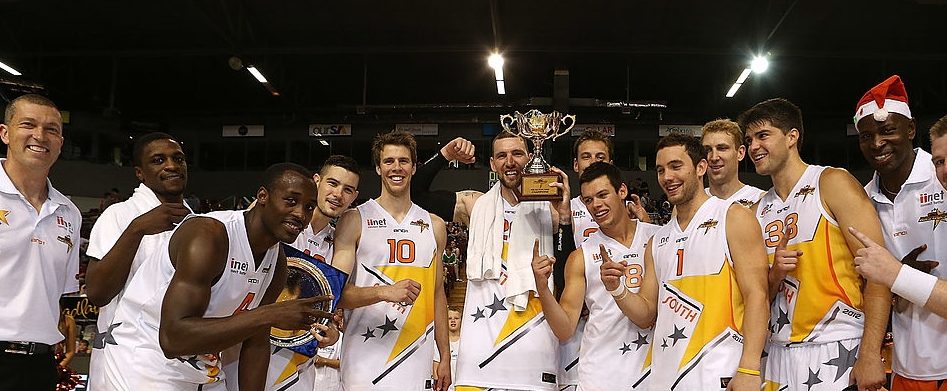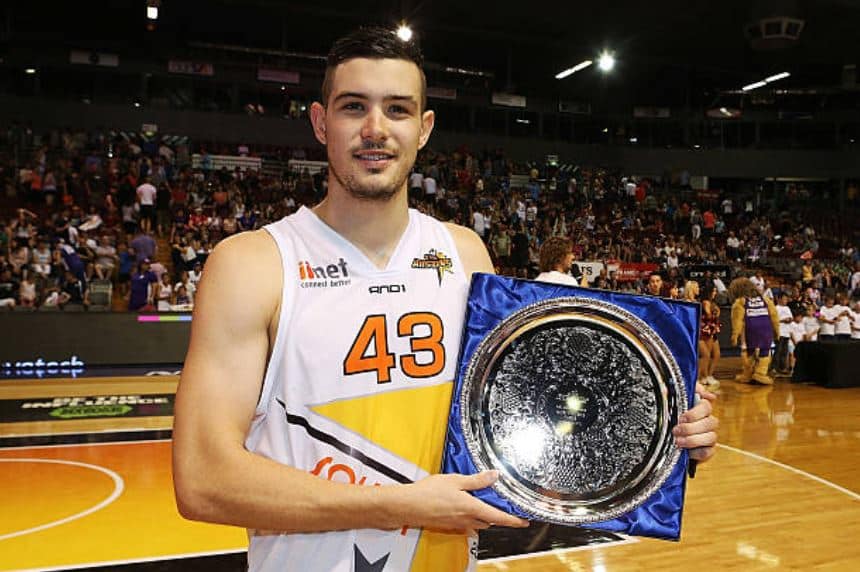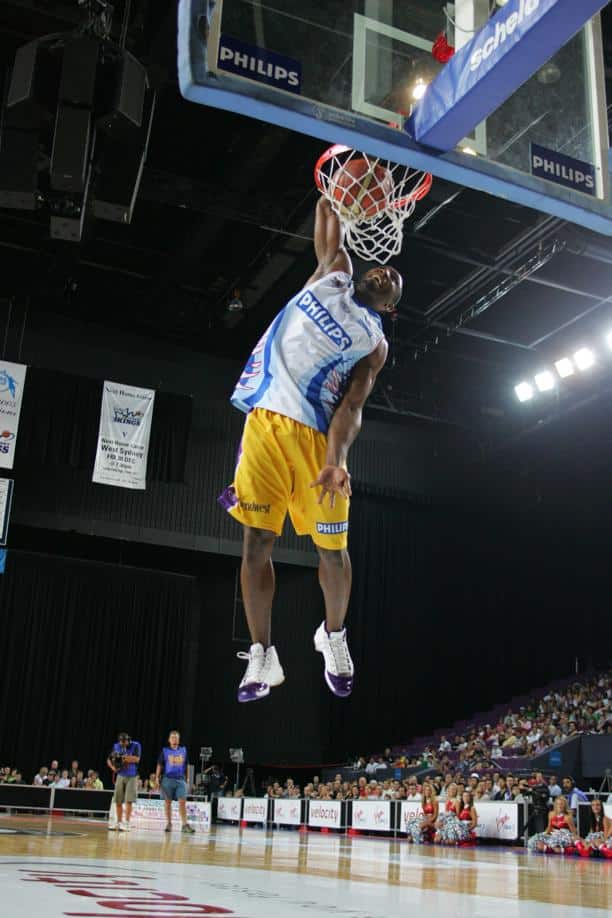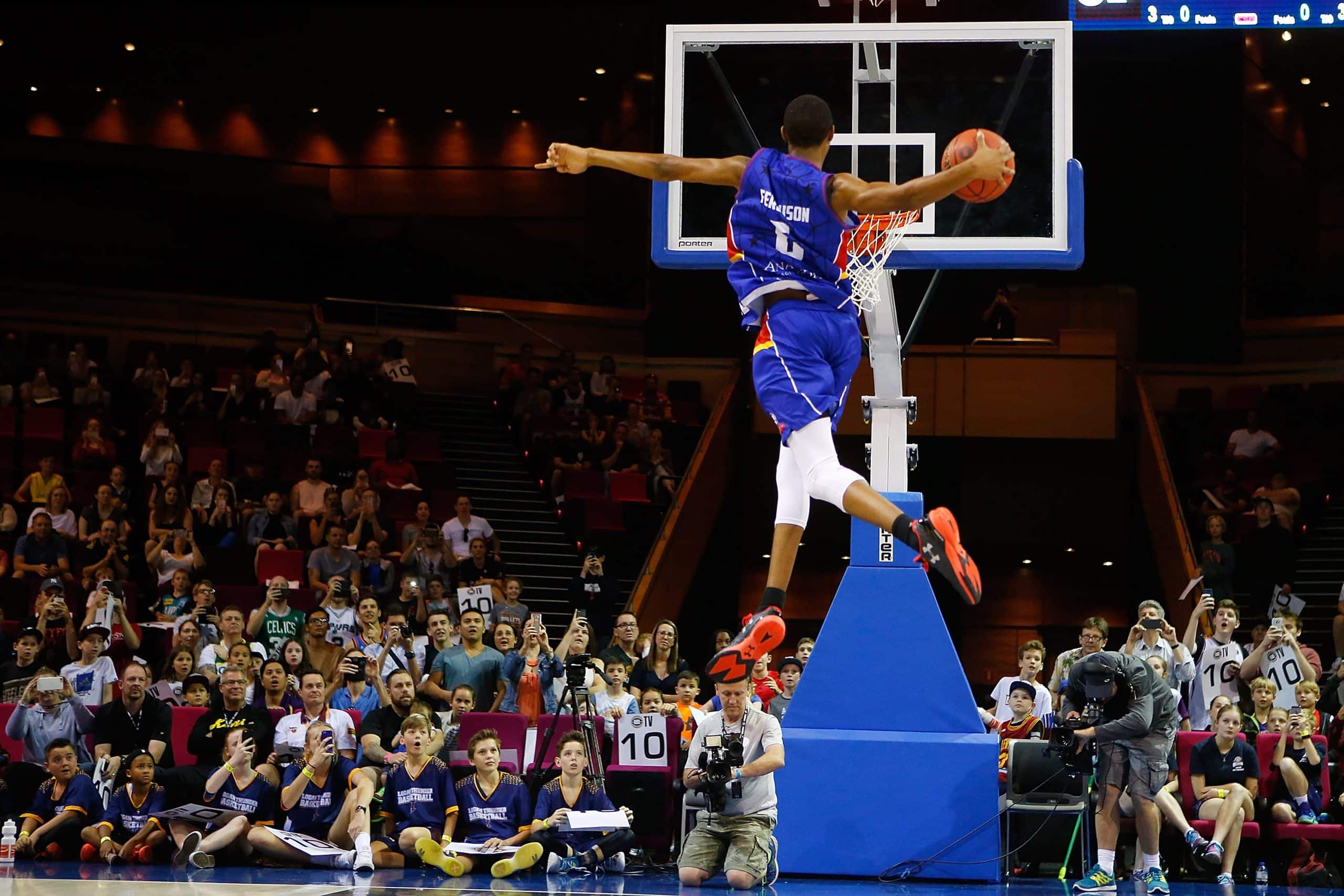
The NBA All-Star weekend delivered entertainment on new levels and shone a huge spotlight on the NBA.
A record-setting three-point shootout, a slam dunk competition with never before seen jams and an All-Star game played at a competition level unseen for a long time left fans more than happy. It begs the question of why we couldn’t see an All-Star Game (or weekend) return to the National Basketball League.
NBL All-Star games held in Sydney (1994), Adelaide (1995) and Melbourne (1996) were extremely well attended and left an indelible mark on fans who remember these events vividly even today.
It isn’t something the league has completely ignored, in recent years a fan poll was held, asking if they wanted an All-Star game. 90% of fans wanted to see the All-Star game back, but due to league instability, poor attendance and scheduling difficulties, it’s something we haven’t seen return.

Chris Goulding – 2012 NBL All-Star MVP
There’s been only one NBL All-Star game in the past decade. In 2012, 4,523 attended the last NBL All-Star game and watched Melbourne’s Bennie Lewis become Slam Dunk champion, Adelaide’s Stephen Weigh win the three-point shootout and Melbourne’s Chris Goulding finish with 24 points and game MVP honours.
Although many would love to see the return of an All-Star game to the NBL, it’s important to understand the difficulties the league faces in holding such an event.
Extending the NBL schedule for an All-Star game is something the league doesn’t want to do. Import players generally arrive in Australia in September and the season runs from October to March. The NBL’s short season is a huge drawcard for NBL imports who are able to earn a second paycheck for the summer (European playoffs are around May-June) or keep NBA dreams alive by being able to be back in the US at a time players can catch the eyes of NBA teams for a 10 day contract or have a chance to join the team next season.
With the current season already being extended due to FIBA World Cup qualifiers, it’s easy to understand why an All-Star game hasn’t been added to this year’s NBL schedule. It’s possible perhaps to extend by one week if things aren’t going to be impacted, however. We don’t want imports to be deciding other leagues are better options for their careers.

Rolan Roberts injuries his pectoral muscle after this dunk in the 2005 NBL All-Star Game
Injuries are always a huge concern for All-Star games. It’s not in an NBL team’s best interest to have their best players at risk of suffering an injury in an exhibition game, or even worse a dunk competition. In 2005 the Sydney Kings lost star import Rolan Roberts to a season-ending shoulder injury in an All-Star slam dunk competition.
The Kings still made it to the finals without him but failed in their bid to claim a fourth consecutive championship crown, I’m sure then Sydney coach Brian Goorjian would have loved to have seen no All-Star game in the NBL that year.
Scheduling the game is difficult right now. This season especially with the FIBA World Cup Qualifiers already interrupting league play. Holding a game mid-season allows us to select players for the game based on current play, it also does give you a window of having a player recover from an injury suffered in the game and a chance to be back for playoffs (if that occurs).
The league has experimented with holding All-Star activities during the pre-season, 2016’s short-lived ABC exhibition and at the conclusion of a season failed due to many players needing to head overseas immediately after the end of the NBL season, making it difficult to field a game.
It seems there’s no way around having it mid-season, but that falls around January, a time when the NBL already finds it difficult to drag fans away from the beach and family BBQs already.
Financially it is a tough move also. It’s hard to make it something the entire league benefits from as only the team which hosts the event makes (or loses) money from it. In the past, the league has often held the game in areas where basketball is most popular to gain large crowds (42% of the NBL All-Star games have been held in Melbourne) which sees the game played in primarily one or two locations (only Melbourne, Sydney and Adelaide have held an All-Star game twice) and the other 7 teams not really benefitting from it.
It’s tough to ask NBL clubs like Illawarra, Cairns or New Zealand to send their player’s to a game they make no money from, they might get injured in and their fans get little from it. From a player’s perspective, it’s tough to add an additional game to a player’s season where they risk injury without any additional financial benefits.
Although an All-Star game returning is possible, ultimately it’s something that still requires a lot of planning for it to be a success and the league shouldn’t be adding anything like an All-Star game unless it is set up for success.
In the past, we’ve discussed alternatives for an All-Star game including a Future Forces type game which could be held in April/May that would give talented Aussies working on their game here to compete against Aussie talent that returns to Australia from Europe of the NCAA for one game.

Terrance Ferguson won the 2016 NBL Slam Dunk competition at the ABC pre-season event.
Perhaps giving up on an NBL All-Star game and looking at an exhibition that focuses on Australian talent facing players from Asia and Oceania in May/June when playoffs in those countries are completed?
Perhaps an Australiasia All-Star game where players from leagues like Australia’s NBL, China’s CBA, Philipines PBA and rapidly improving leagues like Japan’s B-League and the Asian ASEAN league (where former NBL team the Singapore Slingers play) all take part instead of relying on star NBL imports to stick around for an All-Star game.
On Asia’s border, there is the Iranian Super League, long considered to be Asia’s premier basketball league featuring players like Dominique Jones and Byron Mullens and the Lebanese Basketball League (LBL) where former NBL players Sam Young, Hakim Warrick and forgotten Aussie talent Ater Majok all currently ply their trade. It would certainly be exciting for players to watch take our NBL talent take on players like these.
Potentially there is a two-week timeframe in May/June where we could see a Champions league type tournament featuring the best two teams from the NBL, CBA, ASEAN, PBA and LBL compete in a champions league style tournament, something more likely to gain traction than a one-off exhibition.
Either way, those ideas have huge travel costs associated. Any which way it certainly isn’t an easy solution and it makes perfect sense why the NBL has focused on developing other areas of the game thus far.
Although an All-Star game is a wonderful idea it’s something that requires a lot more planning to ensure it is able to become a long-term fixture for Australian basketball fans.









